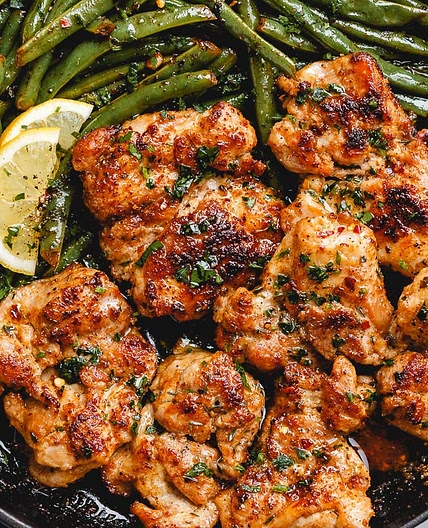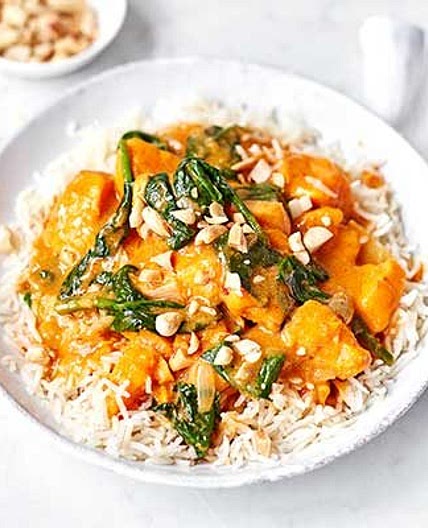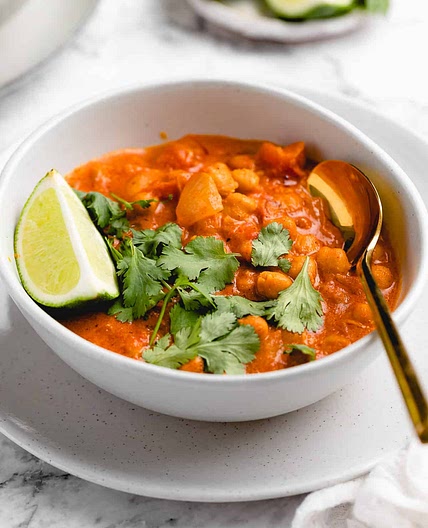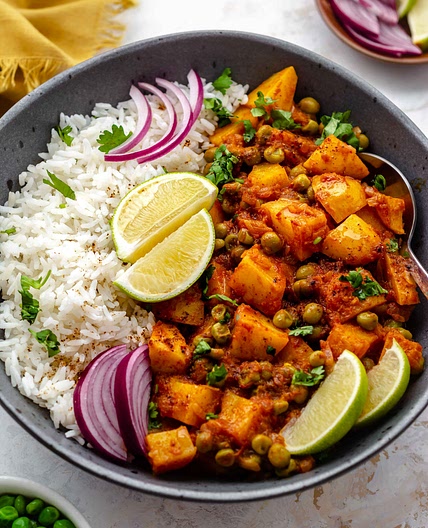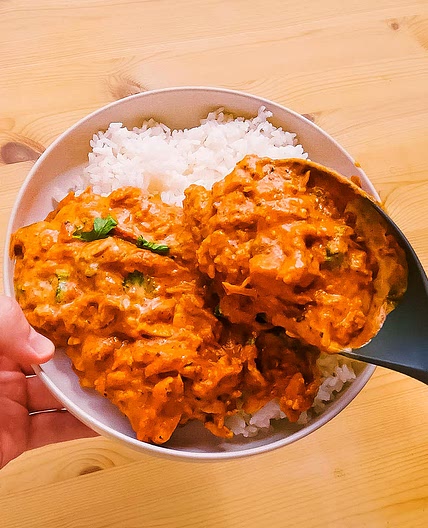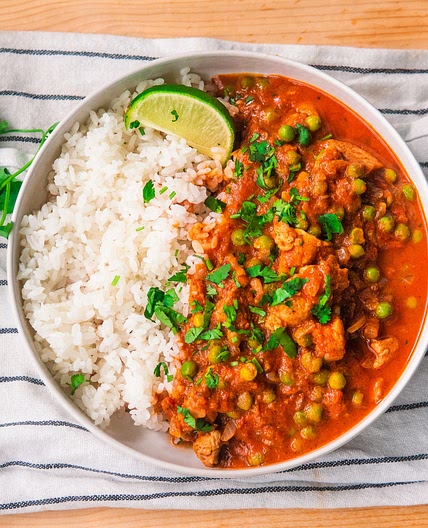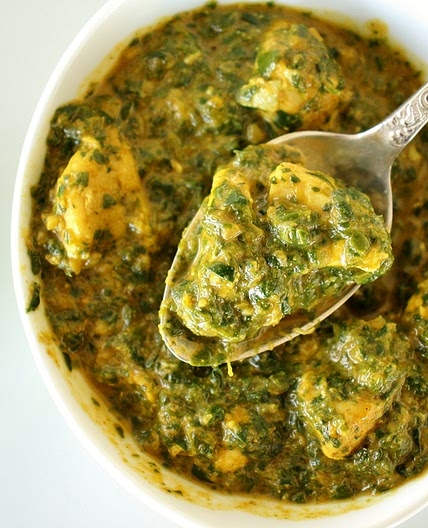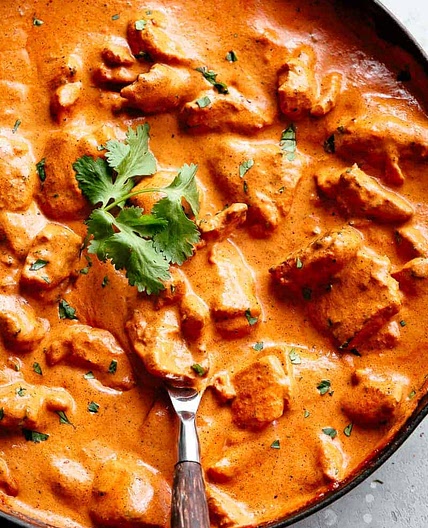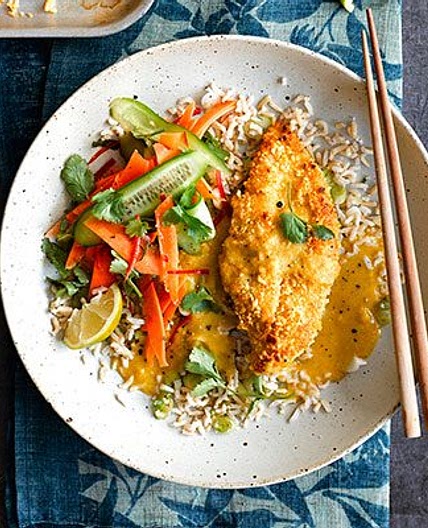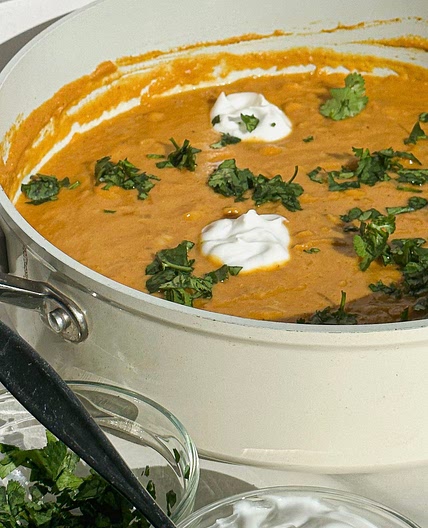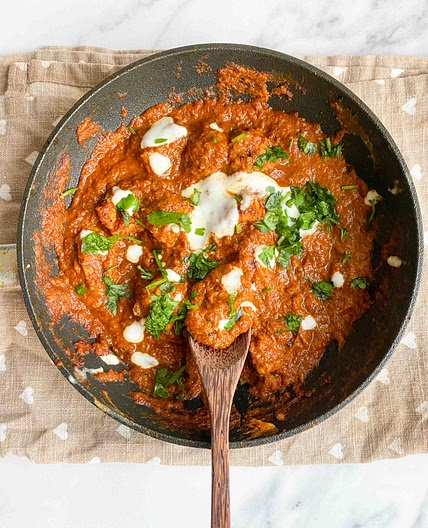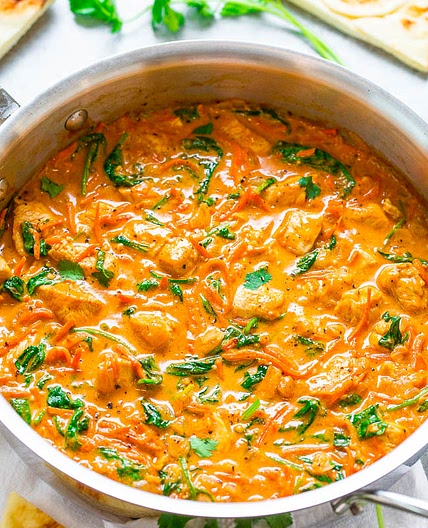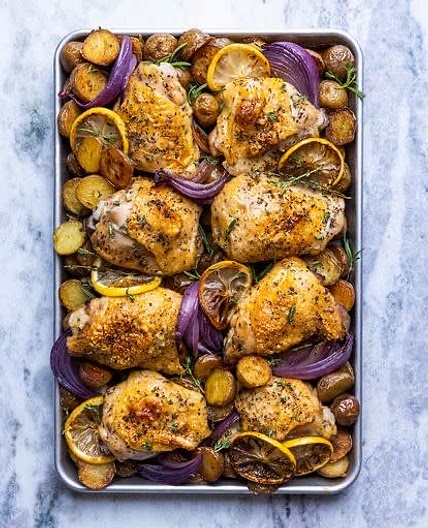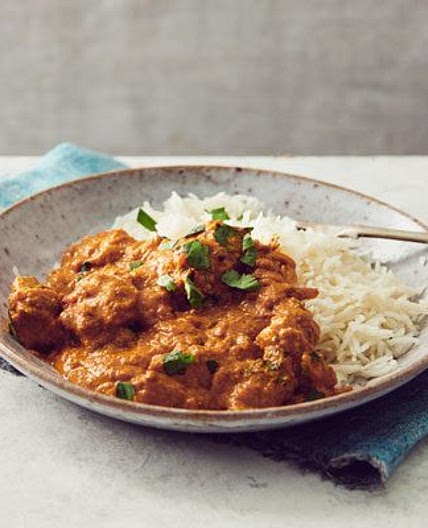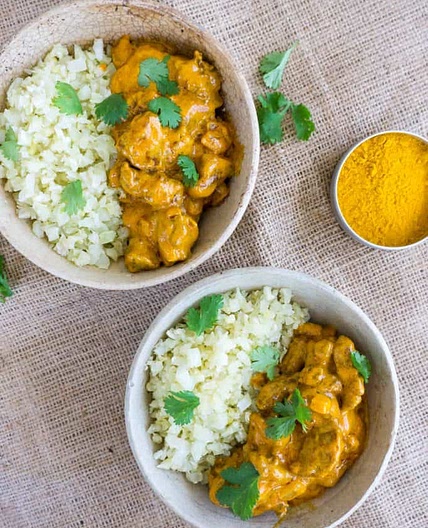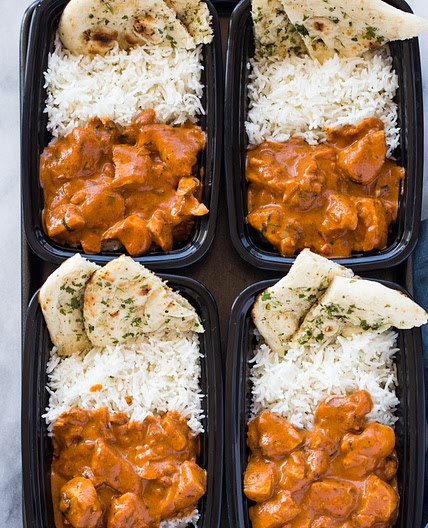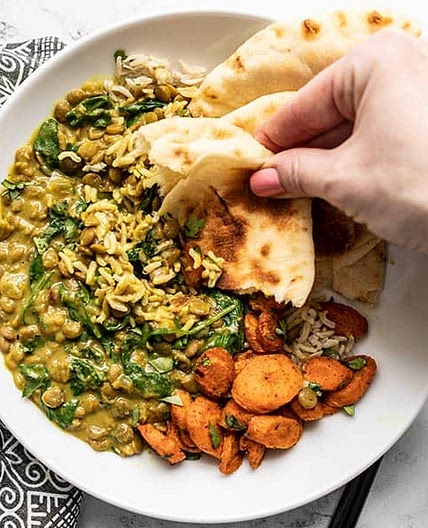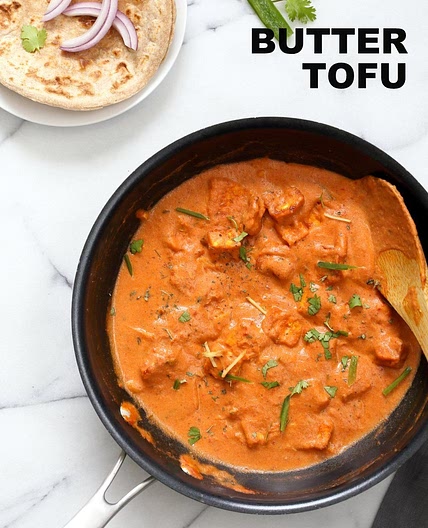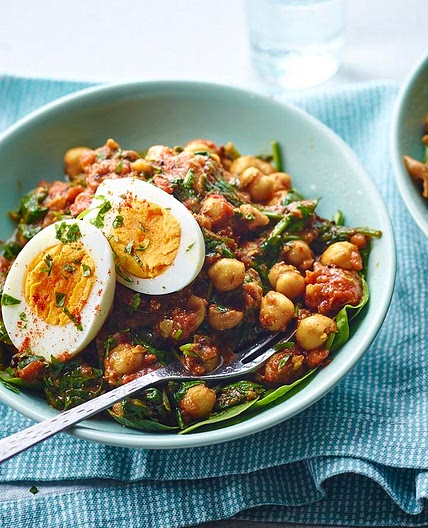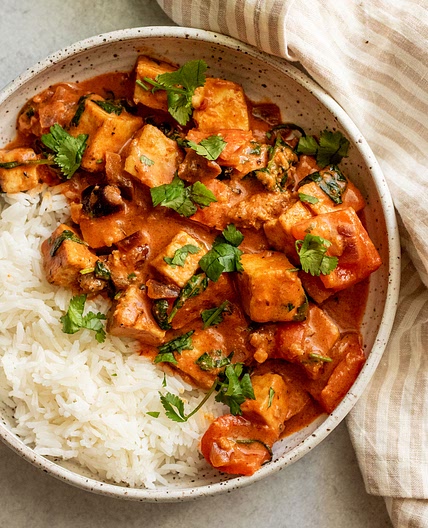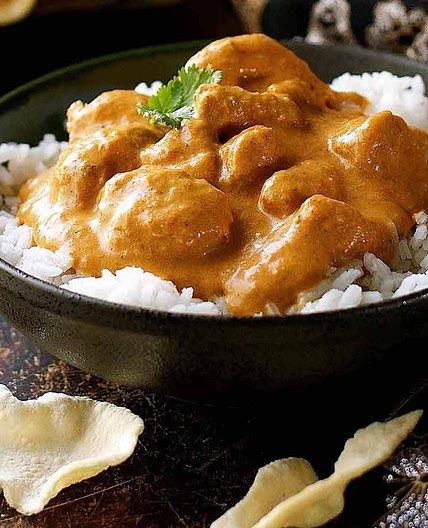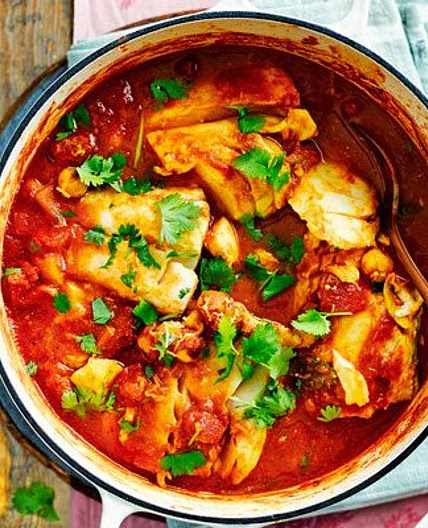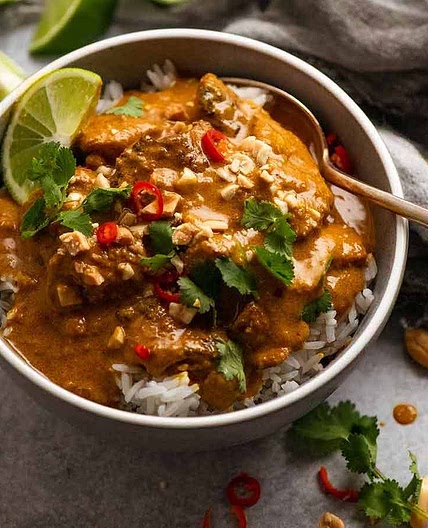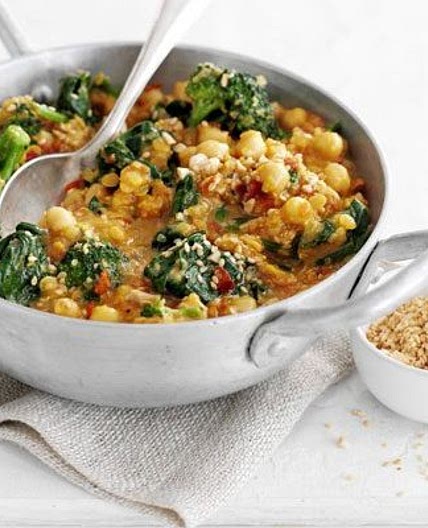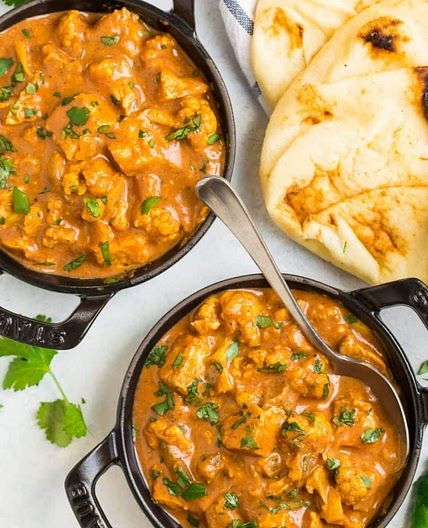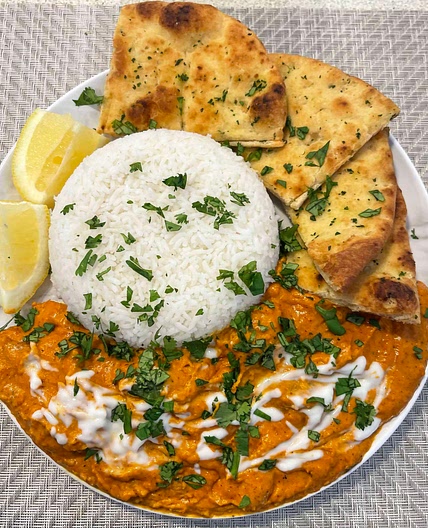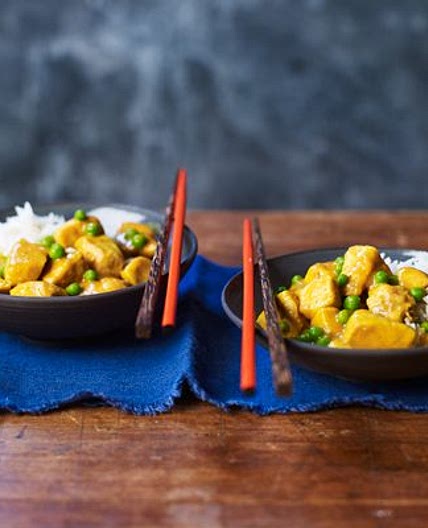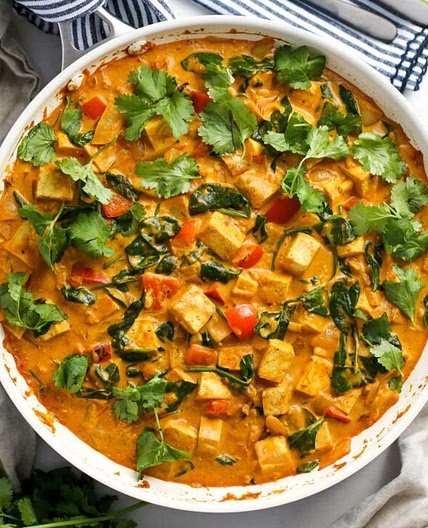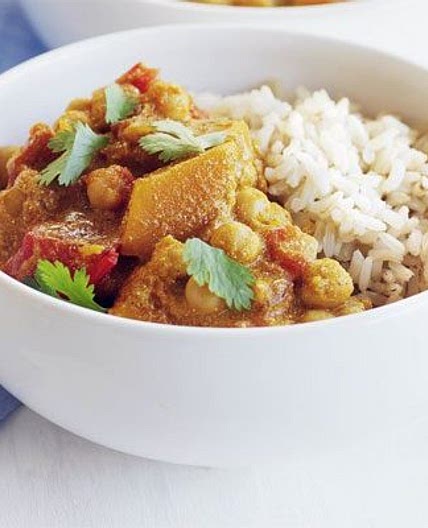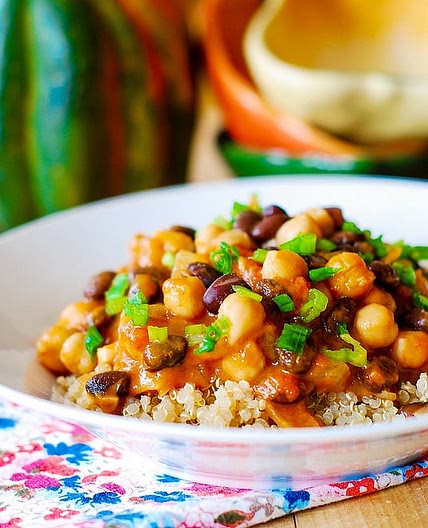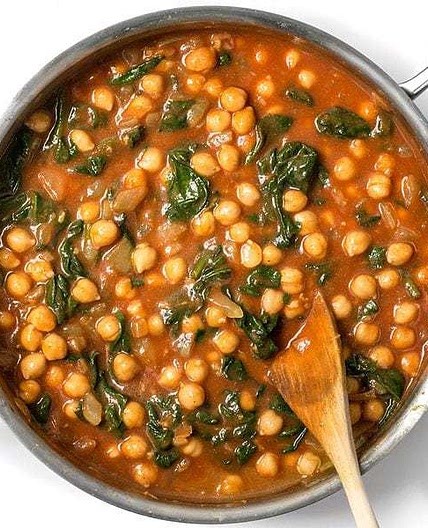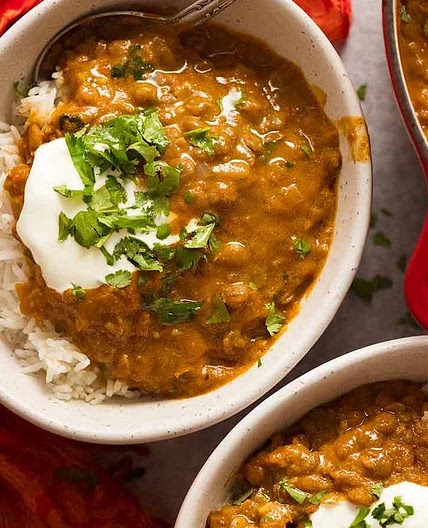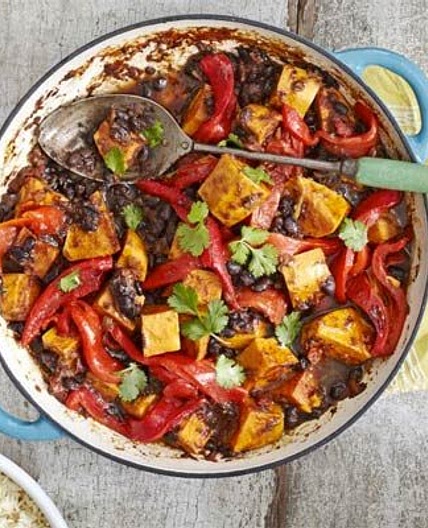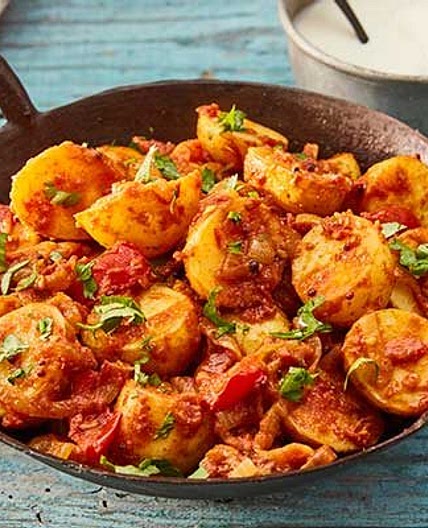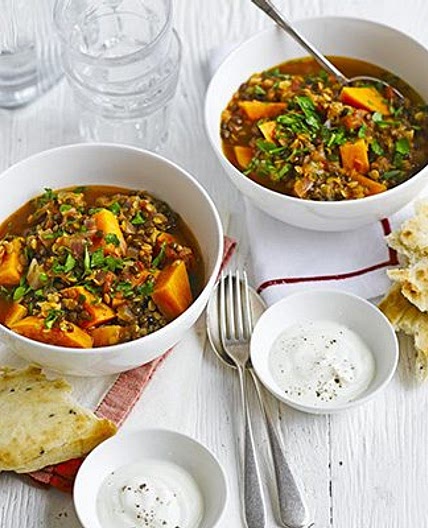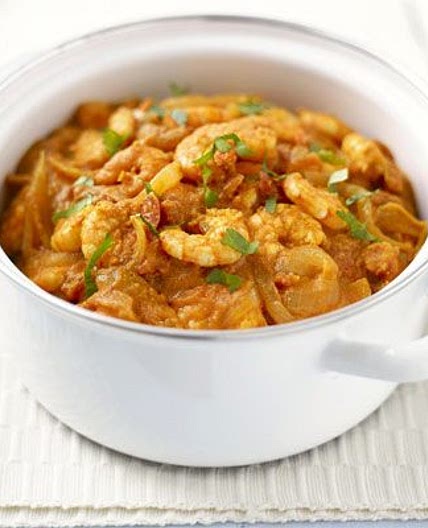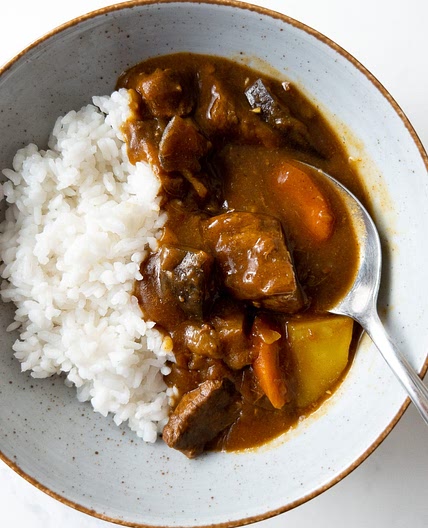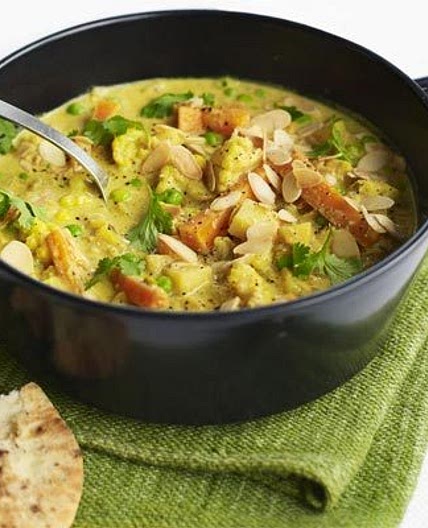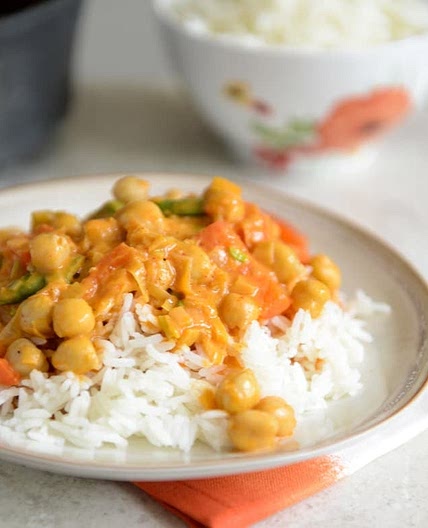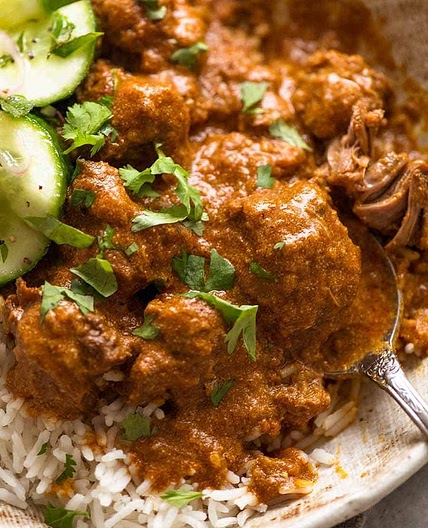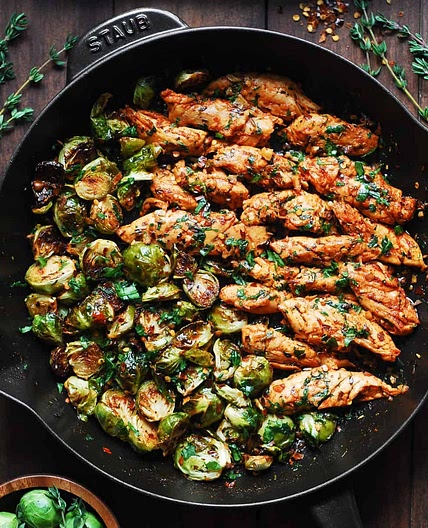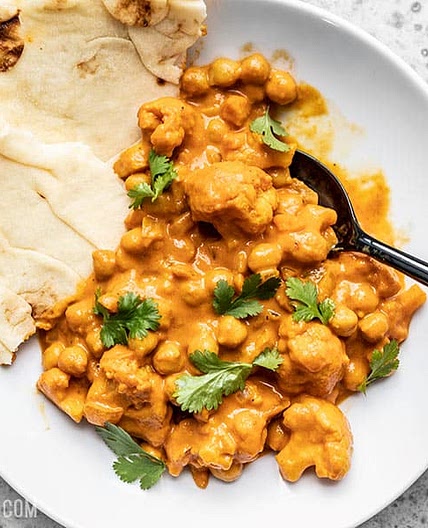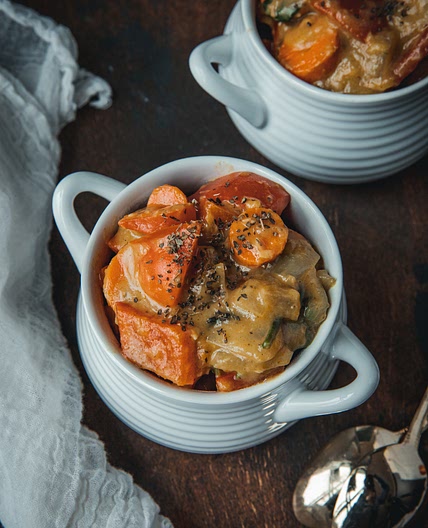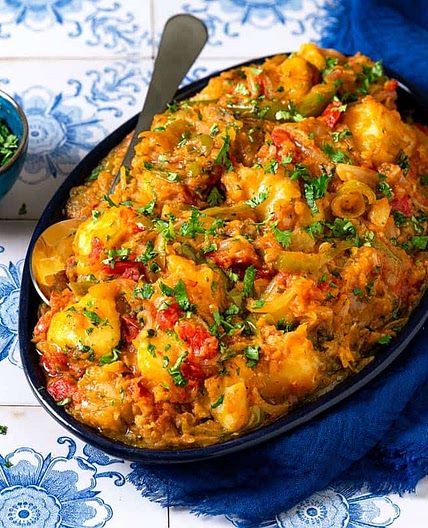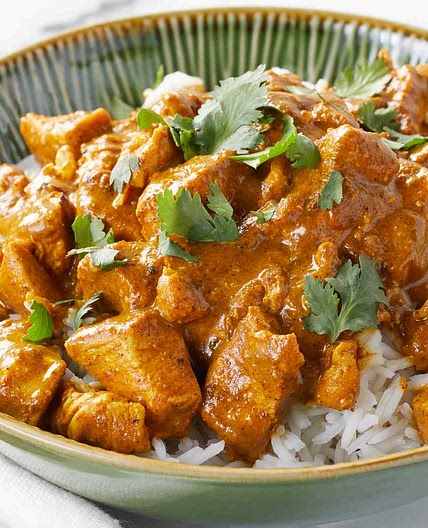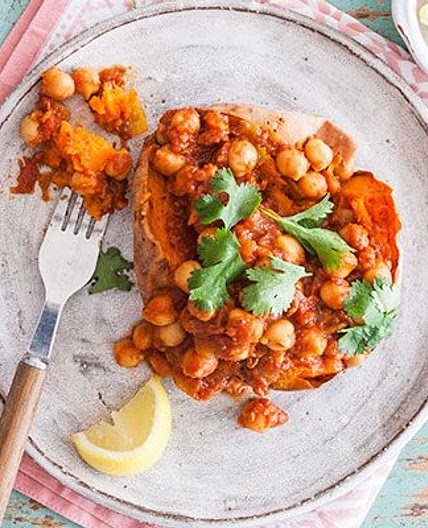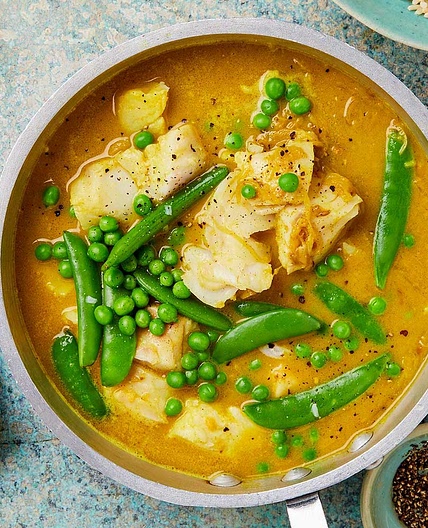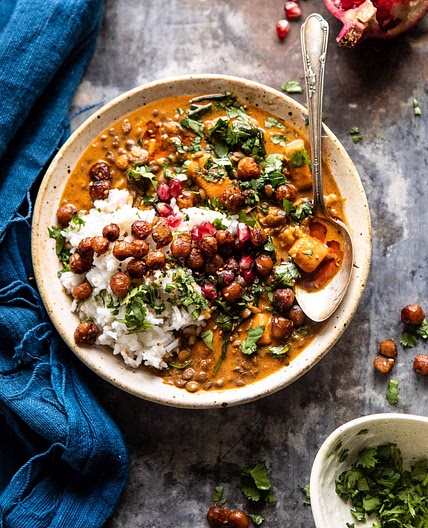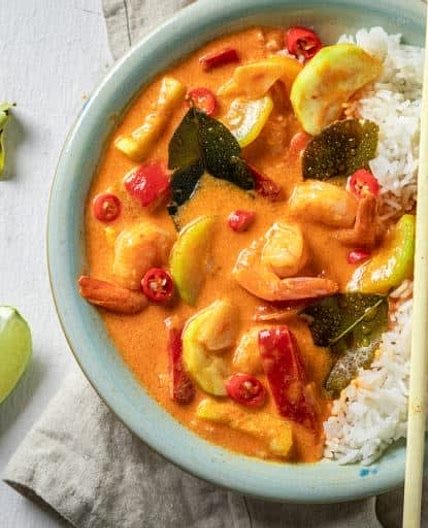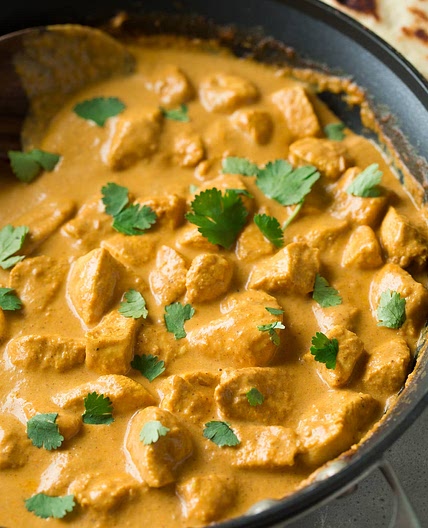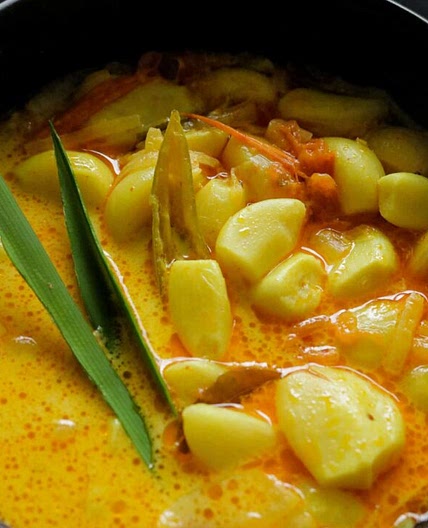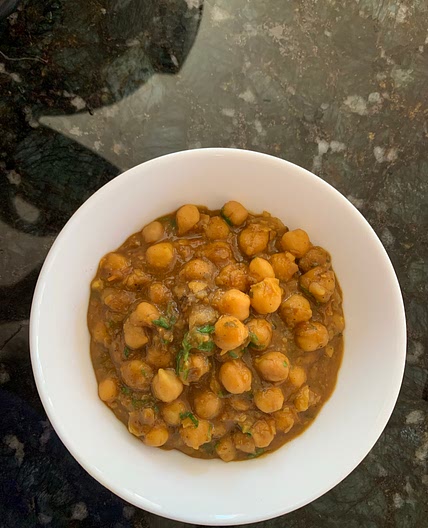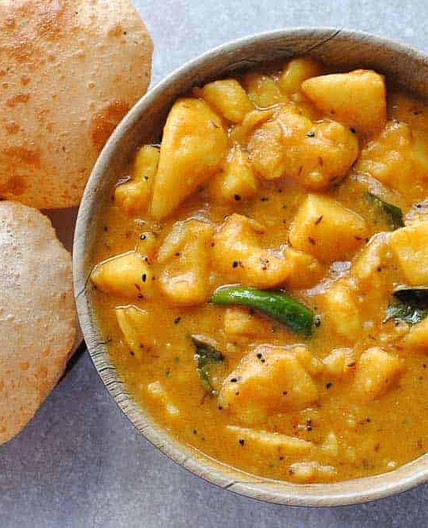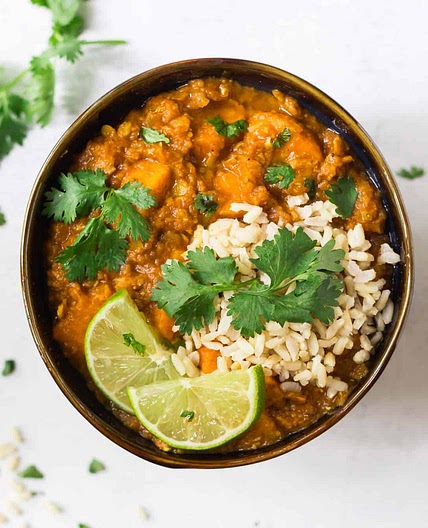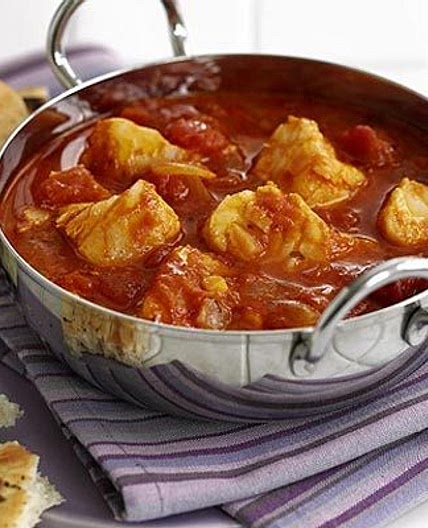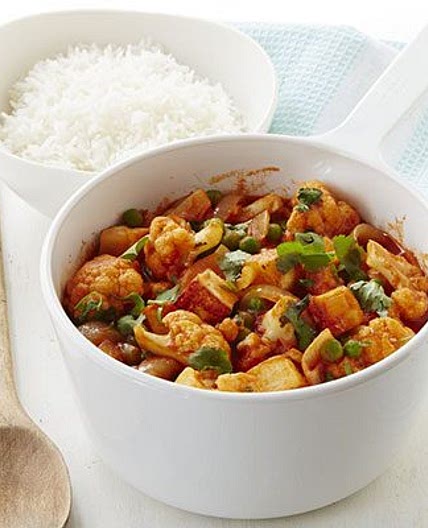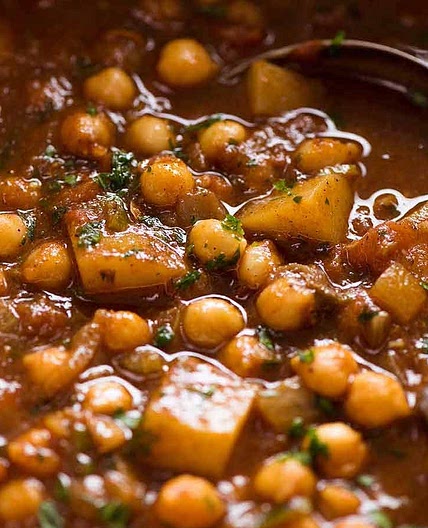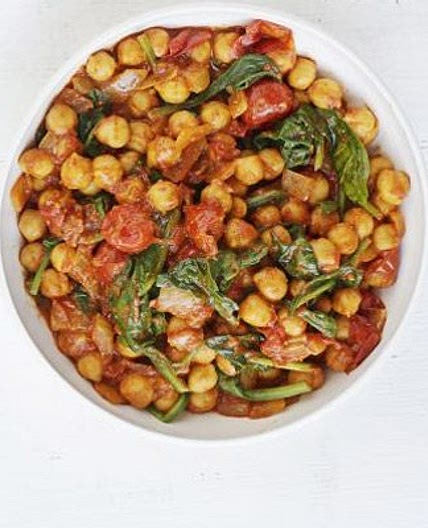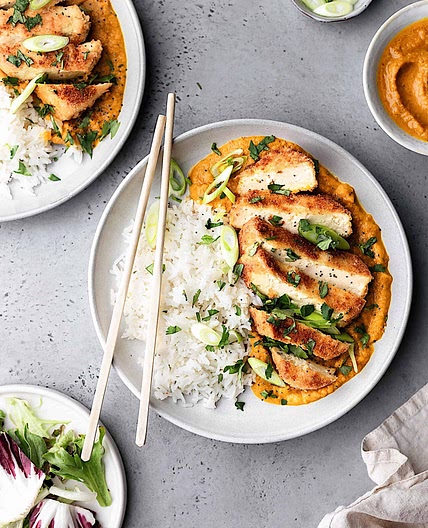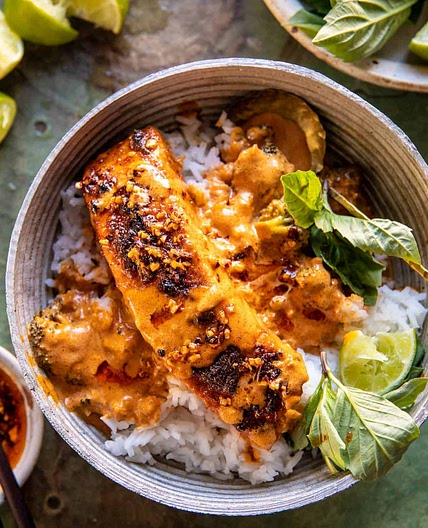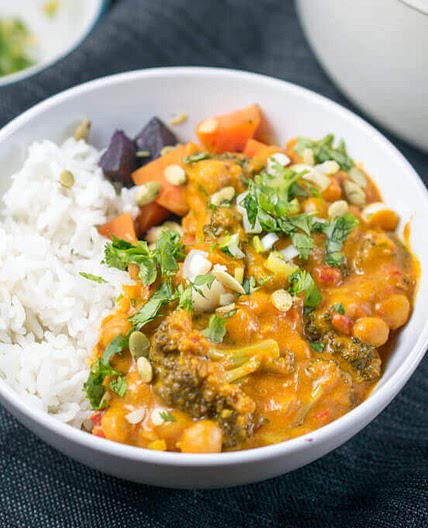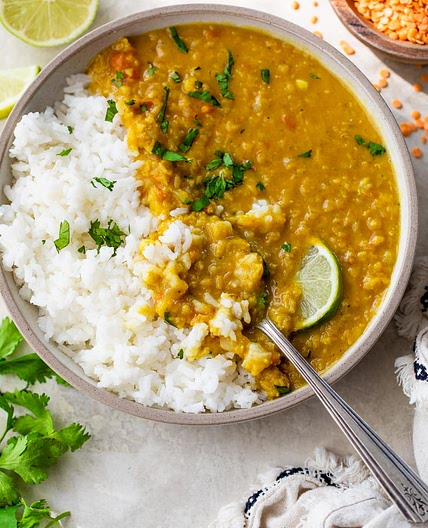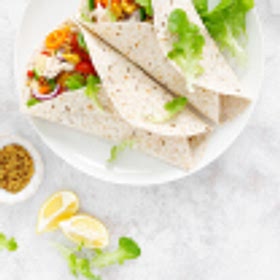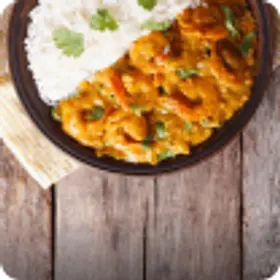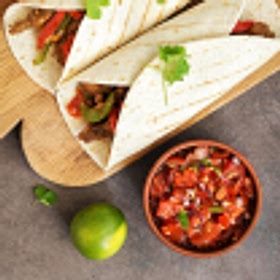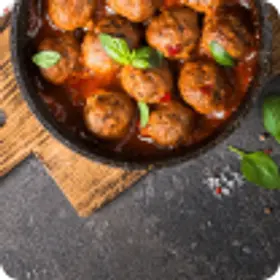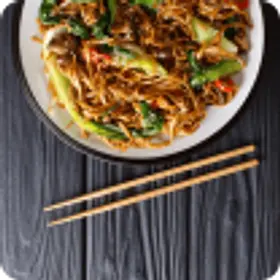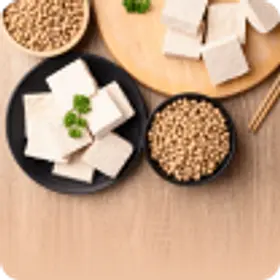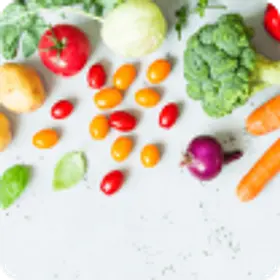Curry recipes, history, and side dishes – Samsung Food
Curry is a delicious and flavorful dish that has been enjoyed around the world for centuries. With its various origins and cultural influences, curry has become a widely popular dish that brings people together over its aromatic and spicy flavors. In this comprehensive guide, we’ll delve deep into the world of curry, exploring its history, types, cooking methods, and more, to help you understand and appreciate this beloved dish even more.
Nutrition per serving size(270g)
- Energy: 149.82
- Total Fat: 11.7
- Saturated Fat: 9.58
- Carbohydrate Total: 5.81
- Sugars: 2
- Protein: 7.22
- Sodium: 202.35
- Fiber: 1.14
- Trans Fat: 0
- Monounsaturated Fat: 0.41
- Polyunsaturated Fat: 0.12
- Cholesterol: 14.86
- Calcium: 15.84
- Magnesium: 27.72
- Potassium: 141.93
- Iron: 2.87
- Zinc: 0.37
- Phosphorus: 54.53
- Vitamin A: 294.44
- Vitamin C: 1.24
- Thiamin B1: 0.02
- Riboflavin B2: 0.03
- Niacin B3: 0.51
- Vitamin B6: 0.03
- Folic Acid B9: 11.33
- Vitamin B12: 0.01
- Vitamin D: 0
- Vitamin E: 0.09
- Vitamin K: 6.82
- Tryptophan: 17.35
- Alpha Carotene: 217.67
- Beta Carotene: 479.83
- Omega 3 DHA: 0.02
- Omega 3 EPA: 0.01
There are so many types of curry recipes that it can be hard to tell what a curry really is. Thai style ones are often creamy and soup-like in consistency, whereas Indian curries are thick and spicy. Malaysian and North African curries are different yet again.
If you’re wondering about all things curry, read on.
History of Curry
Curry has a long and fascinating history that dates back to ancient times. Although its exact origins are unclear, many historians believe that the dish originated in the Indian subcontinent, where it was made with a wide range of spices, herbs, and meats.
Over time, as traders and explorers ventured to various parts of the world, curry began to spread to different countries and cultures, each adding their unique twist to the dish. Today, there are countless variations of curry recipes from across the globe, each with its own distinct flavors and ingredients.
Types of Curry Recipes
There are many different types of curry, each with a unique style and flavor profile. We could never list them all or we’d be here all day. But to get you started, some of the most popular varieties include following
Indian vs Thai vs Other Curry Recipes
- Indian curry: Indian curry is perhaps the most well-known type, with its rich assortment of spices and flavors. Indian curry is renowned worldwide for its vibrant flavors and aromatic spices. From the creamy and mild butter chicken to the fiery and robust vindaloo, Indian curry offers a wide range of options that you must try!
- Thai curry: Thai curry is known for its coconut milk base and vibrant colors. Thai curry is famous for its unique combination of flavors that balances sweet, sour, spicy, and salty elements. This type of curry has three main types according to different ingredients and spicy levels. It is also known to incorporate key ingredients, such as lemongrass, kaffir lime leaves, and Thai basil, that help you experience the distinct taste of Thai curry.
- Japanese curry: Japanese curry, known for its comforting and hearty nature, has its own distinct character. Japanese curry is made with curry roux that sets this curry apart from others and this main ingredient contributes to the sweeter and richer flavor notes. It is often enjoyed with tender meat, vegetables, and rice and there are many regional variations but one of the popular dishes is katsu.

- Caribbean curry: Caribbean curry showcases the fusion of African, Indian, and European influences, resulting in a delightful blend of flavors. It contains various spices, such as turmeric, cumin, and allspice, that bring Caribbean curries to life. Jamaican goat curry and Trinidadian chicken curry are some of the examples that showcase the distinct taste of Caribbean curry.
- Malaysian Curry: Malaysian curry offers a delightful mix of Malay, Chinese, and Indian culinary traditions. The mouthwatering flavors of Malaysian curry often features rich coconut milk, fragrant spices like turmeric and cardamom, and a harmonious balance of sweet, savory, and spicy elements. Popular Malaysian curry recipes include rendang, laksa, and curry mee.
So what goes into a curry recipe?
Key Ingredients in Curry Recipes
Here, we’ll explore the key ingredients that lend curry its unique taste and character. Whether you’re new to the curry world or a seasoned curry enthusiast, understanding these essential ingredients will empower you to create authentic and flavorful curry dishes.
Aromatic Spices
Curry’s distinct flavor profile is attributed to a harmonious blend of aromatic spices. Cumin, coriander, turmeric, and fenugreek are the foundational spices that provide depth and warmth to curry. You can balance the quantities to achieve the right flavor intensity in your curry dish, whether you want it mild but warming or hot and punchy.

Chili Peppers
Adding chili peppers play a pivotal role in defining the spiciness of curry. From mild to fiery, there is a range of chili pepper varieties to choose from, such as cayenne, Thai bird’s eye chili, or Kashmiri chili. You can adjust the heat levels according to your preference.
Herbs and Leaves
Fresh herbs and leaves bring a burst of freshness and vibrancy to curry. Coriander leaves, curry leaves, and Thai basil are some great examples. You can incorporate these herbs at different stages of cooking to maximize their flavors and create a well-rounded curry experience.
Coconut Milk
Coconut milk is a signature ingredient in many curry recipes, providing a creamy note and a good texture. There are different types of coconut milk with various richness and thickness that you can add. Coconut milk also helps to balance the flavors and create a velvety curry base. In some recipes, yoghurt is used instead.
Tomato and Tamarind
Tomatoes and tamarind add a delightful tanginess to certain types of curry. They help achieve the perfect balance of acidity and sweetness in your curry. From the vibrant red color of tomato-based curries to the tangy undertones of tamarind-infused dishes, these ingredients elevate the taste profile of your dish.
Meat, Seafood, or Vegetables
The choice of protein or vegetables in your curry adds depth and variety to the overall experience. Whether it’s chicken, lamb, fresh seafood, or a medley of vegetables, selecting high-quality ingredients ensures a memorable curry. Properly marinating or prepping your choice of protein is essential to enhance its flavors and complement the curry sauce.
Cooking Method

Curry can be made in a variety of ways, depending on the type of dish and ingredients used. Many curries involve slow-cooking meats or vegetables in a flavorful broth packed with herbs and spices. Others involve sautéing the ingredients before adding them to the sauce.
Regardless of the method used, there are several tips and tricks you can use to get the perfect curry. Make sure to use fresh and high-quality spices, experiment with different spice blends, and balance the flavors with the right amount of salt, heat, and sweetness.
What to Serve with Curry Recipes?
Pairing curry with the right accompaniments can elevate your dining experience to new heights. Let’s dive in and explore a range of complementary side dishes, beverages, and condiments that perfectly complement curry.
Rice
Rice is a classic choice to serve alongside curry, as it helps balance the flavors and provides a neutral base. Opt for aromatic basmati rice with Indian curries, sticky rice with Thai curries, or jasmine rice with Asian curries. Experiment with different rice varieties to enhance the overall taste and texture of your curry dish.

Bread as a Side for Curry Recipes
Bread is a versatile option that complements curry beautifully. Naan, roti, or chapati are popular choices that add a soft and chewy element to the meal. They are perfect for mopping up curry sauce after you’re done. If you don’t have naan or roti, you could consider crusty bread or baguette slices for dipping into hearty curries. It might not be as authentic, but it’s still delicious!
Vegetable Side Dishes
Vegetable side dishes provide a fresh and nutritious accompaniment to curry which can sometimes be a heavy dish. Consider options like a refreshing cucumber raita or a tangy tomato salad for Indian curries. Stir-fried bok choy or steamed greens work well with Asian curries. The vibrant colors and crunchy textures of vegetable sides add contrast and balance to the meal.
Pickles and Chutneys to go with Curry Recipes
Pickles and chutneys add a burst of tanginess and complexity to your curry experience. They cut through the dish and can also help temper the heat from spicy curry recipes. From mango chutney to lime pickles or spicy relishes, these condiments offer a delightful contrast to the rich and savory flavors of curry. Explore regional options or experiment with homemade varieties to find your perfect match.

Beverages
Curry can be a bold and flavorful dish, making refreshing beverages a welcome addition to the meal. Consider pairing your curry with cooling options like iced tea, lemonade, or a refreshing fruit-infused water. If you’re looking for an authentic touch, try pairing Indian curries with mango lassi or Thai curries with Thai iced tea.
How to Properly Store Curry
Proper storage is essential to maintain the freshness and quality of curry. Here are some tips on how to store curry properly:
- Cool and transfer to airtight containers: Allow your curry to cool down to room temperature before storing. Once cooled, transfer it to airtight containers. Glass or food-grade plastic containers with tight-fitting lids work well for storing curry.
- Refrigerate for short-term storage: If you plan to eat the curry within a few days, store it in the refrigerator. Keep airtight containers in the fridge to keep the curry fresh and safe to eat.
- Freeze for longer-term storage: Freezing curry preserves its taste and texture for a long time. However, it’s essential to freeze the curry in suitable portion sizes, making it easier to thaw and use as needed. Divide the curry into smaller airtight containers or freezer bags, leaving some space for expansion during freezing.
- Label and date containers: To keep track of the curry’s storage time, label each container or freezer bag with the date of preparation. This helps you identify the oldest curry and eat it first, so you don’t end up throwing it out.
- Thawing and reheating: When you’re ready to use the stored curry, thaw it in the refrigerator overnight or use the defrost setting on your microwave. Avoid thawing at room temperature, as this can promote bacterial growth. Once thawed, reheat the curry thoroughly on the stovetop or in the microwave until it reaches piping hot temperatures. Stir the curry occasionally to ensure even heating.
FAQs for Curry Recipes
No, not all curries are spicy. While many curries contain chili peppers or other spices that add heat and spice to the dish, not all varieties are spicy. By adding or removing spices and seasonings, you can adjust the level of spice to your liking.
Absolutely! You can make curry without meat by using vegetables or tofu as a substitute. Just make sure to use a flavorful base and plenty of spices to make up for the lack of meat.
Curries can be made with a variety of proteins such as chicken, beef, lamb, fish, shrimp, or tofu. Vegetables like potatoes, carrots, bell peppers, peas, and cauliflower are commonly used as well. The choice of meat or vegetables depends on your preference and the regional variations of curry.
Conclusion
Curry is a versatile and delicious dish that has become a beloved favorite around the world. Whether you’re a seasoned curry expert or a curious newcomer, our comprehensive guide has everything you need to know about this flavorful and aromatic dish. From its rich history to its various types and cooking techniques, exploring the world of curry is a journey worth taking.

